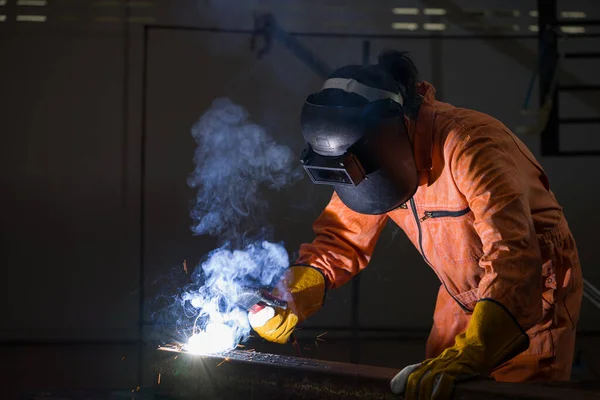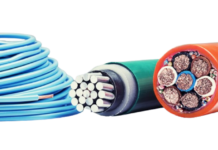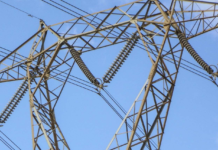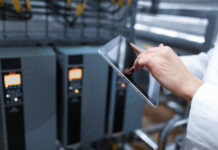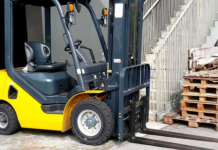Welding is a skilled trade that involves joining two or more metal pieces together using heat and pressure. Welders utilize various devices and equipment, like welding lights, cathodes, and welding machines, to make solid, super-durable connections between metal parts. Welding can be acted in different settings, including modern manufacturing shops, building locales, and auto-fix carports.
As well as being a profession, welding can likewise be a leisure activity for those keen on making metal tasks at home. From building furniture and enhancing things to fixing vehicle parts and hardware, welding permits people to create and improve many metal items.
The MIG welder is a welding machine that is especially valuable for expert and specialist welders. MIG (Metal Latent Gas) welding is a cycle wherein a wire cathode is taken care of through a welding weapon and into the weld pool, liquefied, and used to combine two metal pieces. MIG welding is known for being easy to utilize and creating solid, significant welds. It is exceptionally flexible and tends to be used on many metals and thicknesses. Hence, a MIG welder can be a powerful instrument for those hoping to take their welding undertakings to a higher level.
What is a MIG welder, and how does it work?
A MIG welder, also known as a gas metal arc welder (GMAW), is a welding gear that utilizes a wire cathode and a curve to join two metal pieces. The wire terminal is taken care of through a welding weapon associated with a power source. At the point when the trigger on the welding gun is crushed, an electric flow moves through the cathode and makes a bend. This bend softens the metal, and the liquid metal joins the two bits of metal together. The MIG welder likewise utilizes a safeguarding gas to shield the weld from pollution and balance the curve.
One of the benefits of MIG welding is that it is somewhat simple welding to learn, particularly contrasted with different kinds of welding, for example, stick welding or TIG welding. MIG welders are likewise flexible and can be utilized to weld a wide range of metals, including steel, aluminum, and tempered steel. They are commonly used in various automotive, construction, and manufacturing industries.
Different Types of MIG Welder
There are many different types of MIG welders, each with advantages and disadvantages.
The most common styles include:
- TIG welders are reliable but expensive to purchase and operate. They produce a smooth finish with no porosity or distortion.
- Single-phase MIG welders have an internal circuit that allows them to be used in either 110v or 220v environments without changing the power source. That makes them ideal for small-scale welding projects like plumbing fixtures or electrical boxes on construction sites where you might need access to both electric outlets simultaneously (like when working on an electrical sub-panel).
- Multi process MIG welders offer more flexibility than single-phase models by allowing multiple processes within one machine, such as arc starting and stopping and GTAW (Gas Tungsten Arc Welding).
Setting up your MIG welder
- Preparing the metal surface is essential in setting up your MIG welder. The surface should be clean, dry, and free of contaminants or rust. Any dirt, oil, or paint on the metal’s surface can affect the weld’s quality.
- Choosing the right wire and gas for your project is also important. The wire electrode used in MIG welding is available in various diameters and materials. The type of wire you choose will depend on the metal you are welding and the thickness of the metal. In addition to the wire, you will also need to select a shielding gas to protect the weld from contamination. Different shielding gases are used for different types of metals, so it is important to choose the right one for your project.
- Setting the correct welding parameters is also important for getting good results with your MIG welder. The welding parameters include the welding current, voltage, and wire feed speed. These parameters can be adjusted on the MIG welder or welding gun. The correct parameters will depend on the type of metal you are welding, the thickness of the metal, and the size of the weld. Following the manufacturer’s recommendations for the correct welding parameters for your specific MIG welder is important.
MIG welding safety
MIG welding can be a safe activity if the proper precautions are taken. Here are some tips for maintaining safety when MIG welding:
- Wear the proper protective gear: It is important to wear protective equipment when MIG welding to protect yourself from the hazards of welding. That includes a welding helmet to protect your face and eyes from the arc, a flame-resistant welding jacket, gloves, and long pants.
- Avoid electric shock: To avoid electric shock, ensure that your MIG welder is grounded correctly and that you are wearing dry, insulated shoes. Avoid standing in water or on damp surfaces when welding.
- Avoid burns: The arc and molten metal produced when MIG welding can cause burns. To avoid burns, keep a safe distance from the arc and molten metal, and wear a flame-resistant jacket and gloves.
- Follow proper ventilation guidelines: MIG welding generates fumes that can be harmful if inhaled. Follow good ventilation guidelines to ensure you are not breathing in these fumes.
- Use caution when welding in tight spaces: When welding in tight spaces, be aware of your surroundings and take extra precautions to avoid hazards such as fires or explosions.
By following these safety tips, you can help to ensure that your MIG welding projects are completed safely and successfully. Setting up your MIG welder.
Conclusion:
In this article we discuss Mig welder and Mig welding machine. MIG welding is a popular type that is easy to learn and can be used on various metals. MIG welders are versatile and can be used for many welding projects, from minor repairs to large fabrication jobs.

